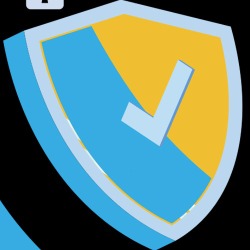
Overview
Course Description
DevSecOps and AWS Cloud Security Engineering
This comprehensive course prepares professionals to become highly skilled Cybersecurity and Cloud Security Engineers with a specialized focus on Cloud–Security–Compliance–Automation within Amazon Web Services (AWS) environments. Designed for today’s rapidly evolving digital landscape, the program bridges the gap between software development, cloud infrastructure, and cybersecurity operations by integrating DevSecOps principles into every stage of the AWS system lifecycle.
Participants will learn how to design, deploy, and secure AWS-native architectures, embedding security controls directly into CI/CD pipelines and Infrastructure as Code (IaC). Through a combination of in-depth theory, hands-on labs, and real-world case studies, learners will gain practical experience in threat modeling, vulnerability management, compliance automation, Zero Trust architecture, and continuous monitoring using AWS security services.
Emphasis is placed on mastering AWS-native and open-source tools such as AWS Config, CloudTrail, Security Hub, GuardDuty, IAM, KMS, Trivy, Checkov, and Terraform for container security, identity management, IaC scanning, and policy-as-code enforcement. Learners will also explore compliance automation aligned with FedRAMP, NIST 800-53, ISO 27001, and CIS Benchmarks, ensuring cloud deployments meet rigorous security standards.
By the end of the course, graduates will be able to implement secure, compliant, and automated AWS cloud environments. They will be prepared for roles such as DevSecOps Engineer, AWS Cloud Security Engineer, Compliance Automation Specialist, or Zero Trust Architect, and will be well-positioned to pursue industry certifications including AWS Certified Security – Specialty, etc.
Course Features
- Lectures 88
- Quiz 0
- Duration 10 weeks
- Skill level All levels
- Language English
- Students 60
- Assessments Yes
Curriculum
Curriculum
- 14 Sections
- 88 Lessons
- 10 Weeks
- MODULE 1: CORE SECURITY CONCEPTS & GOVERNANCE6
- MODULE 2: NETWORK SECURITY10
- 2.1NOTES/VIDEO
- 2.2NETWORK FUNDAMENTALS & PROTOCOL ANALYSIS
- 2.3DEFENSIVE NETWORK ARCHITECTURE
- 2.4FIREWALLS & NETWORK BOUNDARY DEFENSE
- 2.5INTRUSION DETECTION & PREVENTION SYSTEMS
- 2.6VIRTUAL PRIVATE NETWORKS & ENCRYPTED TUNNELS
- 2.7LESSON 6: WIRELESS NETWORK SECURITY
- 2.8LESSON 7: NETWORK MONITORING & TRAFFIC ANALYSIS
- 2.9LESSON 8: CLOUD NETWORK SECURITY
- 2.10LESSON 9: NETWORK ATTACKS & PENETRATION TESTING
- MODULE 3: CRYPTOGRAPHY & SECRETS MANAGEMENT13
- 3.1VIDEOS
- 3.2LESSON 1: CRYPTOGRAPHY FUNDAMENTALS & MATHEMATICAL FOUNDATIONS
- 3.3LESSON 2: SYMMETRIC CRYPTOGRAPHY & STREAM CIPHERS
- 3.4LESSON 3: ASYMMETRIC CRYPTOGRAPHY & PUBLIC KEY INFRASTRUCTURE
- 3.5LESSON 4: CRYPTOGRAPHIC HASH FUNCTIONS & MESSAGE AUTHENTICATION
- 3.6LESSON 5: KEY MANAGEMENT LIFECYCLE & BEST PRACTICES
- 3.7LESSON 6: SECRETS MANAGEMENT ARCHITECTURE & PATTERNS
- 3.8LESSON 7: SECRETS MANAGEMENT TOOLS & PLATFORMS
- 3.9LESSON 8: CRYPTOGRAPHY IN DEVOPS PIPELINES
- 3.10LESSON 9: CLOUD CRYPTOGRAPHY SERVICES
- 3.11LESSON 10: CRYPTOGRAPHIC VULNERABILITIES & ATTACKS
- 3.12LESSON 12: CRYPTOGRAPHY COMPLIANCE & GOVERNANCE
- 3.13HANDS-ON LABS & PRACTICAL EXERCISES
- MODULE 4: LINUX SECURITY FUNDAMENTALS4
- MODULE 6: AWS CORE SERVICES PROFICIENCY24
- 5.1VIDEO – INTRODUCTION TO CLOUD
- 5.2LESSON 1: AWS CLOUD FOUNDATIONS & SECURITY MODEL
- 5.3VIDEOS IAC – INFRASTRUCTURE AS CODE (IAC) INTRODUCTION – CLOUDFORMATION
- 5.4LESSON 2: INFRASTRUCTURE AS CODE (IAC) INTRODUCTION – CLOUDFORMATION
- 5.5LESSON 2 : CLOUDFORMATION CHEATSHEET
- 5.6VIDEO IAC – INTRODCUTION TO CODE – TERRAFORM
- 5.7LESSON 2: INTRODCUTION TO CODE – TERRAFORM
- 5.8LESSON 2 TERRAFORM CHEATSHEET
- 5.9VIDEO – IDENTITY & ACCESS MANAGEMENT (IAM) MASTERY
- 5.10LESSON 3: IDENTITY & ACCESS MANAGEMENT (IAM) MASTERY
- 5.11LESSON 3: PROJECT – AWS IAM MANAGEMENT VIA TERRAFORM
- 5.12VIDEO – NETWORK SECURITY WITH VPC
- 5.13LESSON 4: NETWORK SECURITY WITH VPC
- 5.14LESSON 4 LAB: DEPLAYING AWS NETWORK RESOURCE WITH TERRAFORM
- 5.15LESSON 5: COMPUTE SERVICES SECURITY
- 5.16LESSON 5: CREATING COMPUTE SERVICES WITH TERRAFORM
- 5.17LESSON 6: STORAGE SERVICES SECURITY
- 5.18LESSON 6: CREATING STORAGE SERVICES WITH TERRAFORM
- 5.19LESSON 7: DATABASE SERVICES SECURITY
- 5.20LESSON 8: MONITORING, LOGGING & AUDITING
- 5.21LESSON 9: AWS SECURITY SERVICES
- 5.22LESSON 10: ENCRYPTION & KEY MANAGEMENT
- 5.23LESSON 12: APPLICATION SERVICES SECURITY
- 5.24HANDS-ON LABS & PRACTICAL EXERCISES
- MODULE 7: VULNERABILITY AND CONFIGURATION MANAGEMENT11
- 6.1VIDEO
- 6.2Introduction to Threat Modeling
- 6.3Introduction to Vulnerability Management
- 6.4Network Vulnerability Scanning Tools
- 6.5CI/CD Pipeline Security Fundamentals
- 6.6Static Application Security Testing (SAST)
- 6.7Dynamic Application Security Testing (DAST) and OWASP Top 10
- 6.8Container & Dependency Vulnerability Scanning
- 6.9Vulnerability Management Automation
- 6.10Vulnerability Prioritization, Reporting & Compliance
- 6.11Final Project – Secure CI/CD & Network Vulnerability Workflow
- MODULE 8: CODE & COMMIT (DEVELOPER-FIRST SECURITY)10
- 7.1LESSON 1: INTRODUCTION TO VERSION CONTROL
- 7.2LESSON 2: INSTALLING GIT AND SETTING UP YOUR ENVIRONMENT
- 7.3LESSON 3: UNDERSTANDING GIT BASICS
- 7.4LESSON 4: WORKING WITH GIT BRANCHES
- 7.5LESSON 5: INTRODUCTION TO GITHUB
- 7.6LESSON 6: CLONING AND COLLABORATING
- 7.7LESSON 7: USING GITHUB DESKTOP & VS CODE INTEGRATION
- 7.8LESSON 8: GITHUB ACTION AND SCANNER INTEGRATION
- 7.9LESSON 8: GITHUB ACTION AND SNYK INTEGRATION SOP
- 7.10LESSON 8: GITHUB ACTION AND SNYK INTEGRATION
- MODULE 9: BUILD & PACKAGE (AUTOMATED QUALITY GATES)0
- MODULE 10: TEST & VALIDATE (PRE-PRODUCTION SECURITY ASSURANCE)0
- MODULE 11: RELEASE & DEPLOY (SECURE, CONTROLLED ROLLOUT)0
- MODULE 12: OPERATE & MONITOR (CONTINUOUS SECURITY & RESPONSE)0
- PROJECT 1: SNYK INTEGRATION WITH GITHUB & GITHUB2
- PROJECT 4: INFRASTRUCTURE AS A CODE2
- MASTER PROJECT6


